Originally published on SoundStage! Xperience
RBH Sound HP-2 measurements can be found by clicking this link.
 With their HP-2 headphones, RBH Sound -- intentionally or otherwise -- makes a bold statement: Nobody gives a damn what your headphones look like, so neither should you. Instead, you should care what they sound like and how comfortable they are.
With their HP-2 headphones, RBH Sound -- intentionally or otherwise -- makes a bold statement: Nobody gives a damn what your headphones look like, so neither should you. Instead, you should care what they sound like and how comfortable they are.
That is exactly the approach RBH took with the HP-2s. The industrial design is fairly generic, reminiscent of Bose’s model QC25. RBH seems to have invested, in top-notch drivers and comfortable padding, all the money they might have spent creating a new design. The drivers use diaphragms made of beryllium, a metal often used in high-end tweeters because it’s extremely light yet stiff. (It’s also brittle and toxic, which is why manufacturing with it is expensive.) The padding, covered in soft plastic, has the look and feel of what you’d see on headphones four times the HP-2s’ list price of $249 USD.
The HP-2s are a closed-back design, with just three tiny pinholes near the bottom of each back plate, to equalize the pressure on the driver when you place the earcups around your ears. The earpieces fold flat so that the HP-2s can easily be slipped into a laptop bag, but they don’t hinge inward -- they can’t fold up as compactly as can the QC25s. A 3.5mm jack in the right earpiece allows cables to be swapped out.
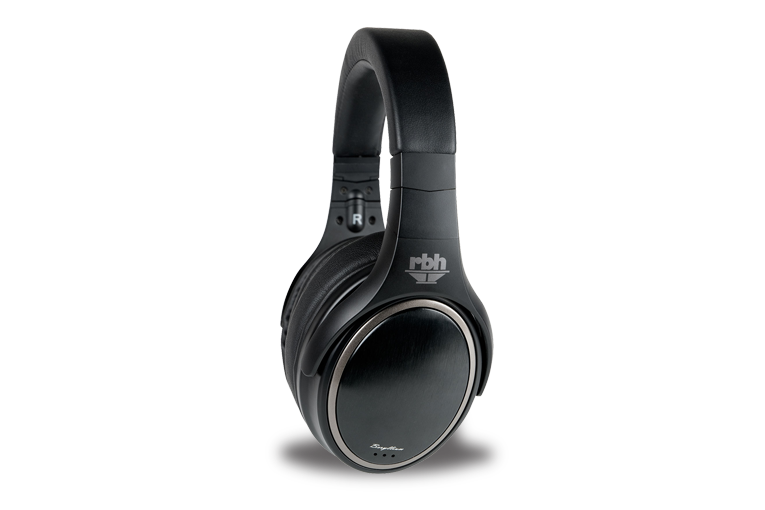
Generally speaking, the HP-2s look like a set of ordinary black headphones. Only a fellow audiophile, noticing the prominent RBH logo above each earpiece, would suspect that they might be anything out of the ordinary.
In the box
The RBH HP-2s come with two cables, each with 3.5mm plugs on both ends. There’s a high-end-ish cable 36” (92cm) long with metal tips, a clear outer jacket, and a strengthening sheath wound around a black inner jacket; it’s billed as a “high resolution cable.” The other cable is 39” (100cm) long and more generic, with an inline microphone and a Play/Pause/Answer button compatible with iOS and Android phones. Also included are a semi-hardshell case 2.6” (66mm) thick, and a 3.5-to-6.2mm adapter.
Use
The Force is strong with the HP-2s -- the clamping force, that is. Like some other audiophile headphones, the HP-2s mash your head firmly, presumably in order to maintain a good seal around the ear. As with Sennheiser’s larger open-back models, that force was well distributed around my ears, so while at first it was rather off-putting, I did get used to it, and could wear the HP-2s for 60 to 90 minutes with little discomfort. Still, the HP-2s won’t be comfort champs unless your head is much smaller than my XXL noggin.
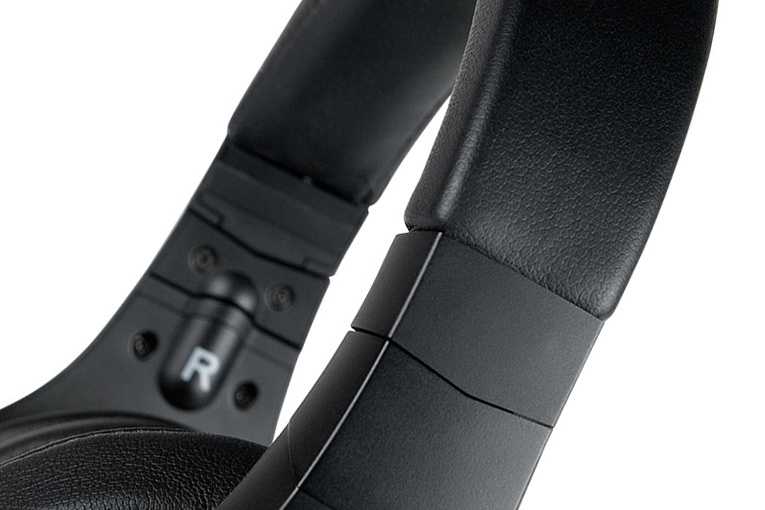
The HP-2s worked well with my Samsung smartphone and iPod Touch; the sensitivity was adequate to get loud volumes from any source I used.
Sound
A couple months ago, when I first heard the HP-2s -- at the 2016 Consumer Electronics Show -- I got the impression that they were far above average. But that was in a crowded room in the Venetian hotel, with people talking and music playing over an RBH speaker system. When I can get a pair of headphones home and compare them directly with some the best in the business, in a quiet environment, it’s a different matter entirely.
The day the HP-2s arrived, I began my listening with “Don’t You Worry ’Bout a Thing,” from Stevie Wonder’s Innervisions (256kbps MP3, Tamla). It was pretty obvious that I was hearing a serious, audiophile-grade headphone. First, I noticed that the tonal balance was neutral; there appeared to be no major boosts or cuts in the bass, midrange, or treble. That alone is enough to make me pretty happy with a headphone. The broad stereo spread and precise imaging of the maracas, guiro, and woodblock accompanying Wonder made me even more happy and impressed. By the time I realized that I was hearing almost zero coloration of Wonder’s voice, I had begun to suspect that the HP-2s might already be a contender for my best-of-2016 list.
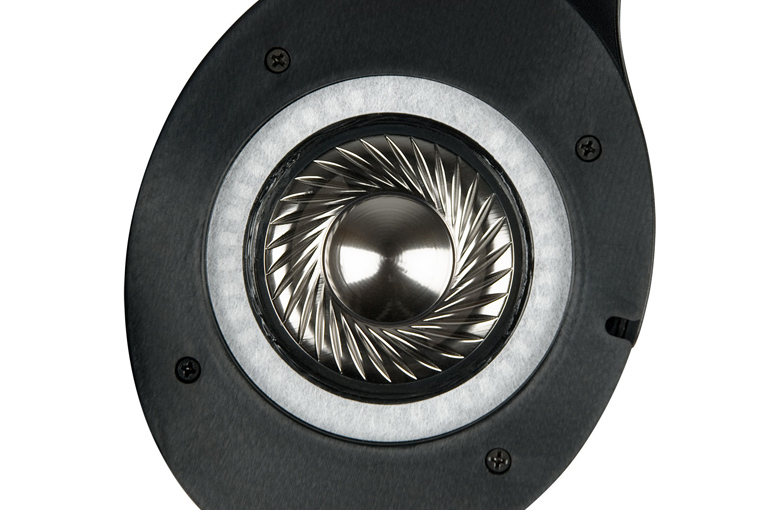
Alexis Cole’s version of “Whip-poor-will,” from Dr. Chesky’s Ultimate Headphone Demonstration Disc (24-bit/96kHz FLAC, Chesky JD161) and her own A Kiss in the Dark (Chesky JD366), let the HP-2s show off their ability to create a sense of space. This binaural recording, using microphones installed in the ear canals of a dummy head designed for headphone testing, eliminates the “music in your head” effect normally produced by headphones. The HP-2s captured the acoustic of the recording venue well, as any good headphones can in this case, but what struck me was the treble detail. Through many headphones, Dan Block’s tenor saxophone on this recording tends to sound dull, as if it’s getting lost in all the reverberance. Through the HP-2s, I could hear more of the detail and breath in Block’s horn. Cole’s voice stuck out nicely in the mix; I could clearly distinguish each syllable, yet she never sounded lispy, as often happens with headphones that are good at pulling voices out of a mix. Basically, everything sounded extremely clear, yet with no sense that the headphones were enhancing or emphasizing any part of the audioband.
“City in Florida,” from Deadmau5’s 4x4=12 (256kbps MP3, Ultra), is about as different from a Chesky recording as it could be. Most of Deadmau5’s music is fully electronic, with lots of added sound processing but no actual miking of instruments in an acoustic space. Yet the HP-2s transitioned gracefully from “Whip-poor-will” to “City in Florida,” showing no signs of strain from Deadmau5’s trademark throbbing, one-note deep bass. I also appreciated the clarity with which the HP-2s presented all the little details in the electronic squiggles and accents that make Deadmau5 fun to listen to (for me, anyway).
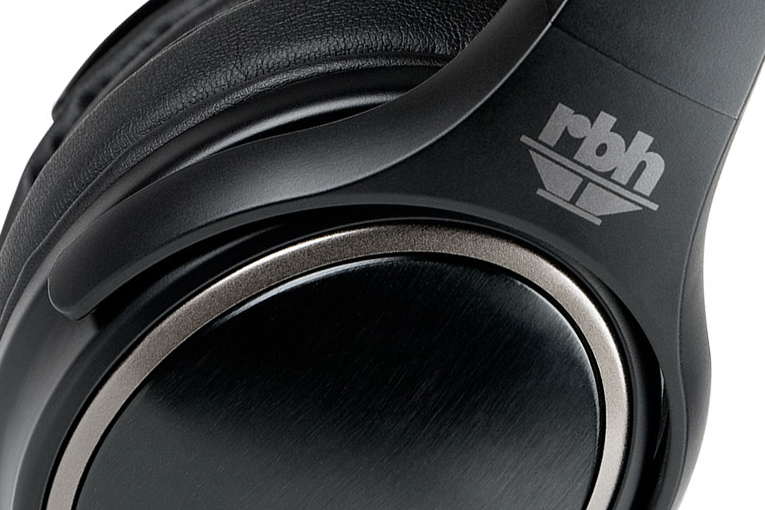
Still, considering how compelling the HP-2s’ treble detail was, and how little unnatural emphasis there seemed to be in the treble, I wanted to try a recording that I knew would sound grating if the headphones were kicking up the treble too much. So I put on “Nancy Jane,” from Snake Liquor, by the Pacific Northwest revivalist group Crow Quill Night Owls (16/44.1 WAV, Bandcamp). This track features the twangy sound of a National resonator guitar and a tenor banjo, accompanied by what sounds like a tambourine or shaker of some sort. It’s a trebly recording with very little bass, so it sounds harsh through many audio systems. The HP-2s portrayed all the detail in the picking, strumming, and slapping, yet the sound never grated on my ears. I also liked the way the HP-2s were able to go from delivering a huge sense of space with the Chesky recording down to almost zero sense of space with Snake Liquor, for which, apparently, no reverb was used.
Listening to the HP-2s on their own, I couldn’t find anything to dislike. I knew, though, that comparing them with competing products would put the HP-2s in a different perspective, so I pulled out the NAD Viso HP50s ($299), which I use as a reference for midpriced, closed-back headphones; and the Oppo Digital PM-3s ($399), a closed-back headphone with planar-magnetic drivers.
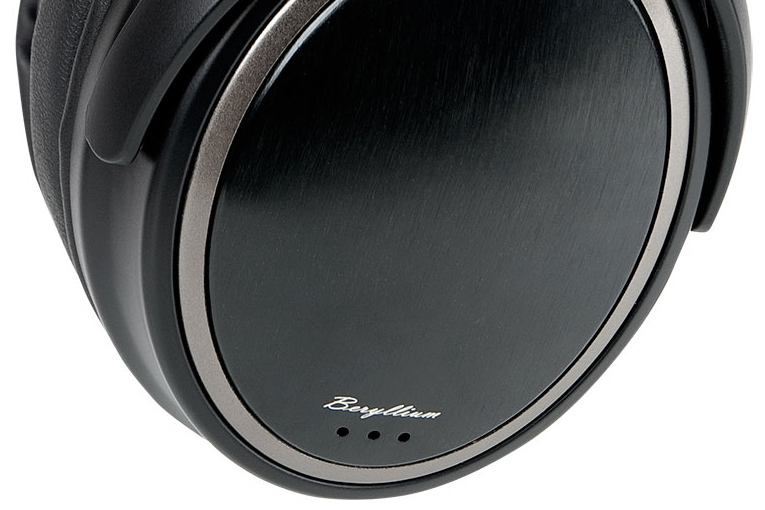
The comparison ended up being something of a tie between the HP-2s and the Viso HP50s. They sounded more alike than different -- kind of like comparing a Fender Telecaster guitar with a Fender Stratocaster. Both sounded neutral, and below 2kHz almost identical. The difference was that the Viso HP50s have just a trace less treble than the HP-2s. Typically, I liked that little bit of extra treble energy I heard from the HP-2s; it made things like acoustic guitars and percussion stand out just a tad more, and voices a little easier to understand. However, voices also sounded a little smoother with the Viso HP50s. Which is best will depend on the recording and your taste. I definitely preferred that extra little kick in the treble the HP-2s gave me with the Stevie Wonder and Alexis Cole cuts, but I thought the HP-2s’ slight extra oomph in the top end made Holly Cole’s voice sound a bit buzzy in her cover of Gordon Lightfoot’s “If You Could Read My Mind,” from her album Night (16/44.1 WAV, Tradition & Moderne/Rumpus Room). Overall, I generally and slightly preferred the HP-2s -- although I find the Viso HP50s much more comfortable.
I thought both headphones exhibited a more neutral tonal balance than the Oppo PM-3s. The PM-3s have a lot more treble energy (or a lot less bass energy, depending on how you look at it), and so tend to emphasize the upper ranges of singers and make them sound thin in comparison to what I heard through the HP-2s and Viso HP50s. The Oppos’ extra treble did give them the biggest sense of space of the three headphones, though I felt their imaging wasn’t as precise, and musicians seemed less corporeal.
Conclusion
I’ve heard almost every major-brand closed-back headphone, and most of the minor-brand models. I can’t think of any for under $500 that are clearly better than RBH Sound’s HP-2s. There might be one whose sound you prefer, of course, but it’ll just be different, not really better. For me, the HP-2s’ clamping force is too strong for long-term comfort, but those with smaller heads -- i.e., almost everyone -- will probably find them more comfortable. Sure, there are a few reasons that this person or that person might not like the HP-2s as much as some costlier competitor -- but if you want closed-back, audiophile headphones, the HP-2s are the best bargain I know of.
. . . Brent Butterworth
Associated Equipment
- Sources -- Apple iPod Touch (third generation), Samsung Galaxy S6 smartphone
- Headphone amp-DAC -- Audioengine D3
RBH Sound HP-2 Headphones
Price: $249 USD.
Warranty: 30 days, refund, customer pays return shipping; one year, repair or replacement, customer pays shipping.
RBH Sound
382 Marshall Way
Layton, UT 84041
Phone: (800) 543-2205
Website: www.rbhsound.com







